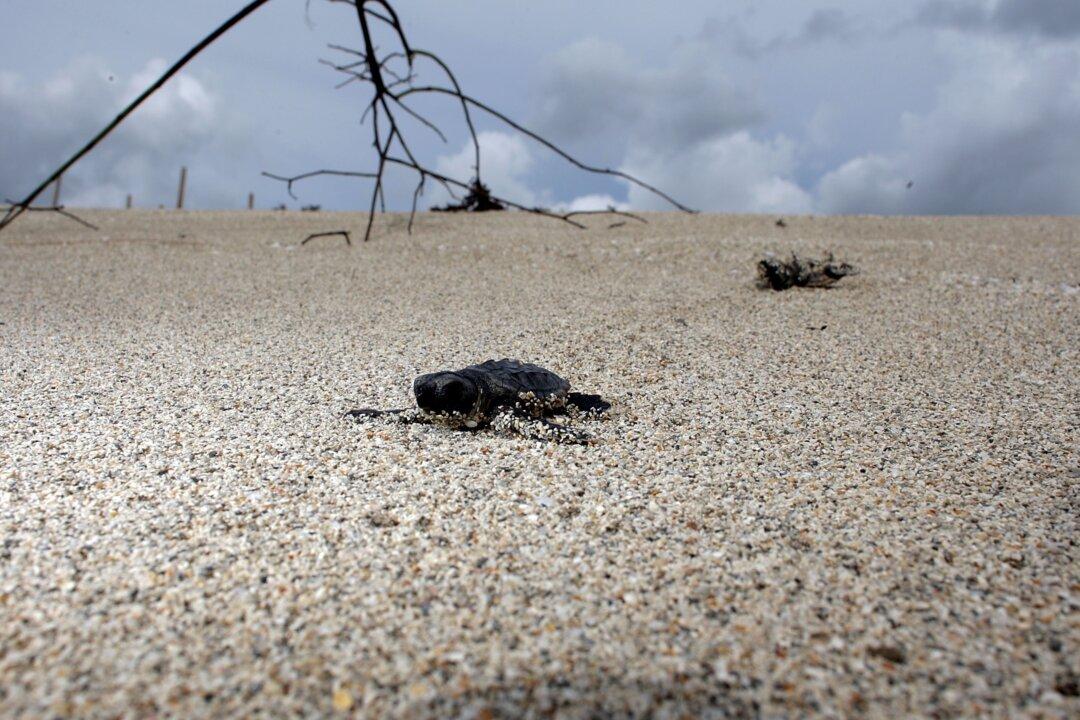Metres away from the Gold Coast’s built-up tourist strips, female turtles are engaging in a secret mission under cover of night to the sand dunes where they can safely lay and bury their eggs.
The journey, which happens every two to three years, sees the female turtles emerge from the ocean on warm summer nights up the beach in nesting quests to find the best spot to deposit their offspring. After locating a space, they dig, lay, and cover the nest before disappearing back into the sea.




